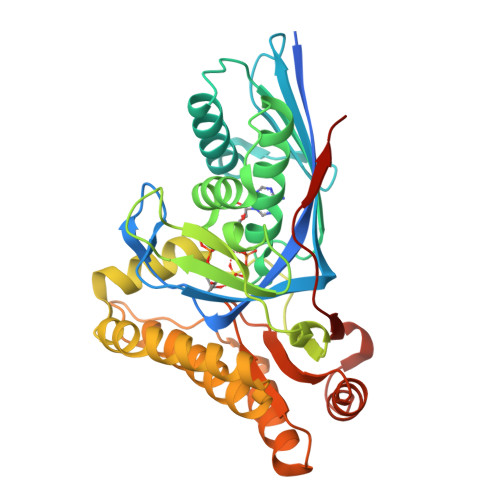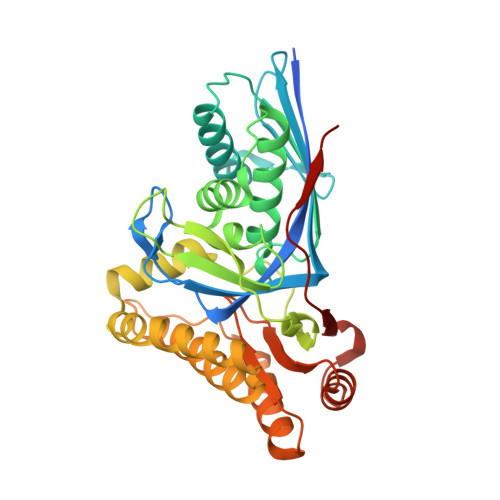Visualizing the enzyme mechanism of mevalonate diphosphate decarboxylase.
Chen, C.L., Paul, L.N., Mermoud, J.C., Steussy, C.N., Stauffacher, C.V.(2020) Nat Commun 11: 3969-3969
- PubMed: 32769976
- DOI: https://doi.org/10.1038/s41467-020-17733-0
- Primary Citation of Related Structures:
6E2S, 6E2T, 6E2U, 6E2V, 6E2W, 6E2Y - PubMed Abstract:
Mevalonate diphosphate decarboxylases (MDDs) catalyze the ATP-dependent-Mg 2+ -decarboxylation of mevalonate-5-diphosphate (MVAPP) to produce isopentenyl diphosphate (IPP), which is essential in both eukaryotes and prokaryotes for polyisoprenoid synthesis. The substrates, MVAPP and ATP, have been shown to bind sequentially to MDD. Here we report crystals in which the enzyme remains active, allowing the visualization of conformational changes in Enterococcus faecalis MDD that describe sequential steps in an induced fit enzymatic reaction. Initial binding of MVAPP modulates the ATP binding pocket with a large loop movement. Upon ATP binding, a phosphate binding loop bends over the active site to recognize ATP and bring the molecules to their catalytically favored configuration. Positioned substrates then can chelate two Mg 2+ ions for the two steps of the reaction. Closure of the active site entrance brings a conserved lysine to trigger dissociative phosphoryl transfer of γ-phosphate from ATP to MVAPP, followed by the production of IPP.
Organizational Affiliation:
Department of Biological Sciences, Purdue University, West Lafayette, IN, 47907, USA.






















